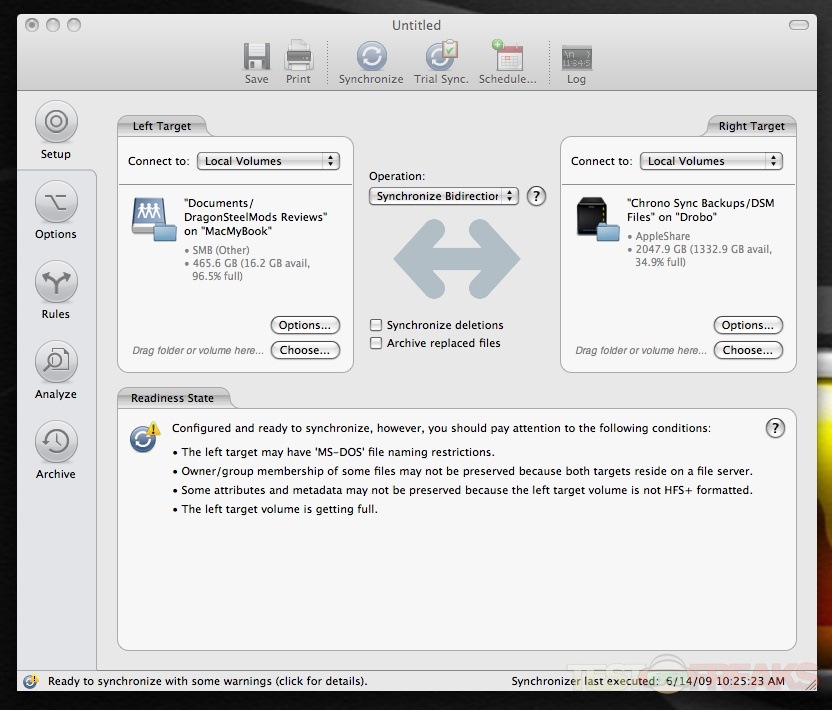
I have set the users account to open the disk image automatically when they login (in login items) but time will tell if this is reliable. The only issue remaining to worry about is how well this copes with reboots and relogins. Indeed this also turned out to be true with OmniPresence, it happily let me create a folder in the disk image to sync against, completed the webdav checks and then did a successful sync against the webdav server showing the resulting files in the folder in the disk image. So disk images clearly can trick programs in to thinking they are local drives. Based on past experience with Apple’s Installer program I was already aware that it also would not run installer packages from a network volume but would run them from a disk image - even when that disk image is on the same network volume. My workaround which works so far is to create a read/write Disk Image file and save that in the users network home directory.

Obviously one could use a network login (and network home directory) and still tell OmniPresence to use a local folder on the boot hard disk probably in /Users/Shared however this is not desirable as it means it would not be backed up and would preclude hot-desking. I may have found a work around for this problem. This effectively would add a 50% cost overhead to OmniOutliner Pro. to effectively use ChronoSync to replace OmniPresence. A potential workaround but highly undesirable might be to use something like ChronoSync to do a bi-directional sync between the webdav folder and the users network home directory, i.e. I cannot change the entire company from network home directories just for the benefit of one misbehaving program. Obviously if the path is not found an error should be given.OmniPresence syncs between OmniGroup server or webdav server to folder and should support both local and network paths.Launch agent runs OmniPresence (this assumes user has set OmniPresence to auto start).

Once created, simply use ChronoSyncs built in scheduler to automate the process. Highly configurable and customisable, its really simple to set up synchronisation documents to undertake a variety of tasks.

This works fine for most properly written applications even somewhat misbehaving ones like Microsoft Office.
#CHRONOSYNC AGENT MAC#
Like many companies we use network home directories for our desktop Mac users.


 0 kommentar(er)
0 kommentar(er)
